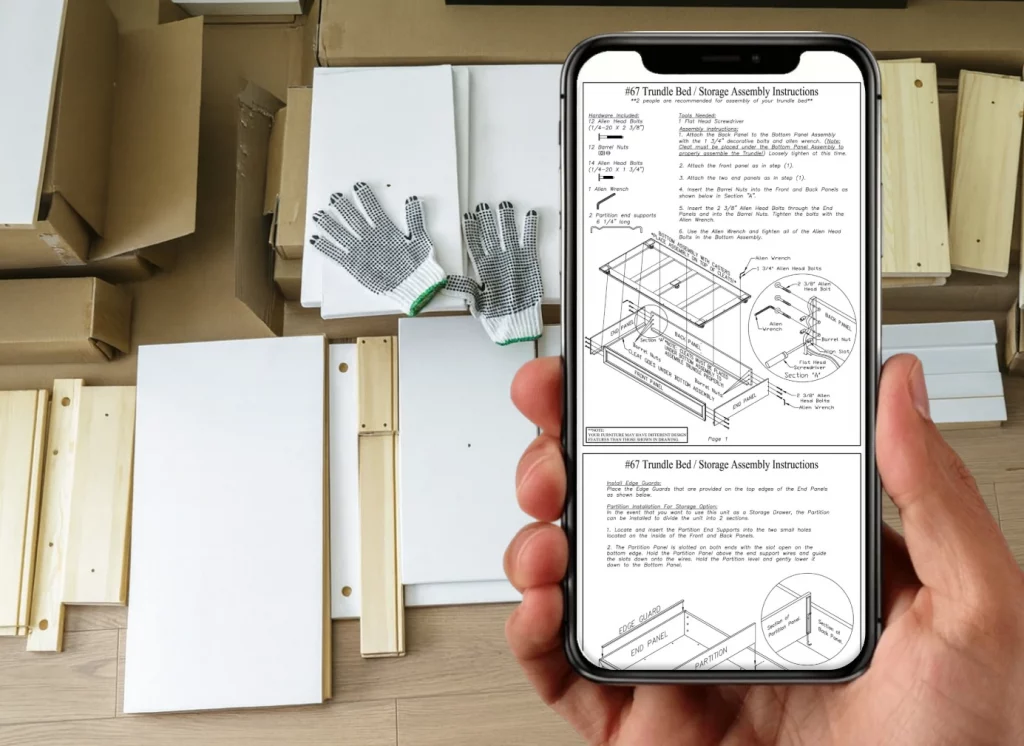Many companies believe they have “digitized” their product instructions. In reality, most are simply hosting a PDF version of their printed manual online. It may tick a box — instructions exist, they’re downloadable, they’re digital! — but this is the equivalent of uploading an old VHS tape to YouTube without remastering it. The content is technically online, but it really tells the user that no one cares about this content.
PDF Origins
The PDF (Portable Document Format), was created by Adobe’s co-founder Dr. John Warnock in the 1990s to display, send, print, and store documents. In the 1990s it made sense to repurpose that file for online downloads, the internet was new and portable computing meant a 5 KG laptop. It saved companies time and money: one file to print, one file to upload. But the advantages were for the producer, not the consumer. Even then, downloading and scrolling through a 30-page manual wasn’t a great experience, it was just the only option.
Today is 2025, Mobile has become the default device for most product research and troubleshooting, and AI-driven search and support are the new norm. PDFs, especially those derived from print layouts, are now a liability.

PDFs Today
1. Usability: PDFs Are a Terrible Mobile Experience
More than 80% of instruction views on StepAlong happen on mobile devices, and that just reflects how people now user instructions: one hand holding the phone, the other trying to assemble, fix or configure. Pinching and zooming through a print-designed PDF is frustrating and slow. Hyperlinks, interactive steps, and responsive layouts don’t exist in traditional PDFs.
2. Accessibility: Print-Based PDFs Exclude Users
Most PDFs created for print are not accessible to screen readers or assistive technologies. Tables aren’t tagged, images lack alt text, reading order is broken. Designing a file for high-quality printing often conflicts with designing it for accessibility which results in users with disabilities being shut out. Accessibility is a key legislative requirement in the the EU GPSR, EAA and the US Section 508.
3. SEO: PDFs Undermine Search Visibility
PDFs aren’t search-friendly. They’re harder for search engines to crawl, lack structured data, rarely get updated, and don’t provide a good user experience — all of which can hurt rankings. Even when indexed, PDFs don’t drive the same engagement as web pages.
4. AEO (AI Search Engine Optimization): PDFs Limit AI Discovery
AI search tools like ChatGPT and Perplexity thrive on structured, contextual data. A print-based PDF gives them none of that. Your instructions may contain exactly the answers customers ask AI systems for, but because the content is locked inside a difficult to read print format, the AI can’t access it in a useful way, and may often misunderstand and give the wrong answer.
5. Customer Service Automation: PDFs Starve Your Bots
If you’re implementing AI-driven chatbots, pointing them at PDFs is like feeding them shredded paper. They’ll index some of it, but inconsistently. Good customer service automation depends on clean, structured content. Without it, bots give partial or incorrect answers that create a bad customer service experience on top of a bad product experience, increasing support costs, the opposite of what you are trying to achieve.
Moving from “Digital Copies” to True Digital Instructions
True digitalization means content-first, not format-first. Instructions built in structured, mobile-friendly formats:
- Scale across devices, languages and accessibility needs.
- Are easy to update instantly (no reprinting, no re-uploading).
- Feed both human and AI search engines
- Integrate seamlessly into chatbots, knowledge bases and support portals.
How StepAlong Helps
Rather than simply hosting static PDFs, StepAlong turns your instructions into structured, mobile-friendly content built for today’s customers and search engines. You create your instructions once in a truly digital format; the platform automatically outputs them to every channel you need — mobile, desktop, chatbots and even compliant, print-ready PDFs when necessary.
Because the content is structured from the start, it’s accessible to all users, instantly searchable, easy for AI to understand, and simple to update across every market and language. This means better customer experiences, smoother support automation and far less time spent managing separate digital and print workflows.




